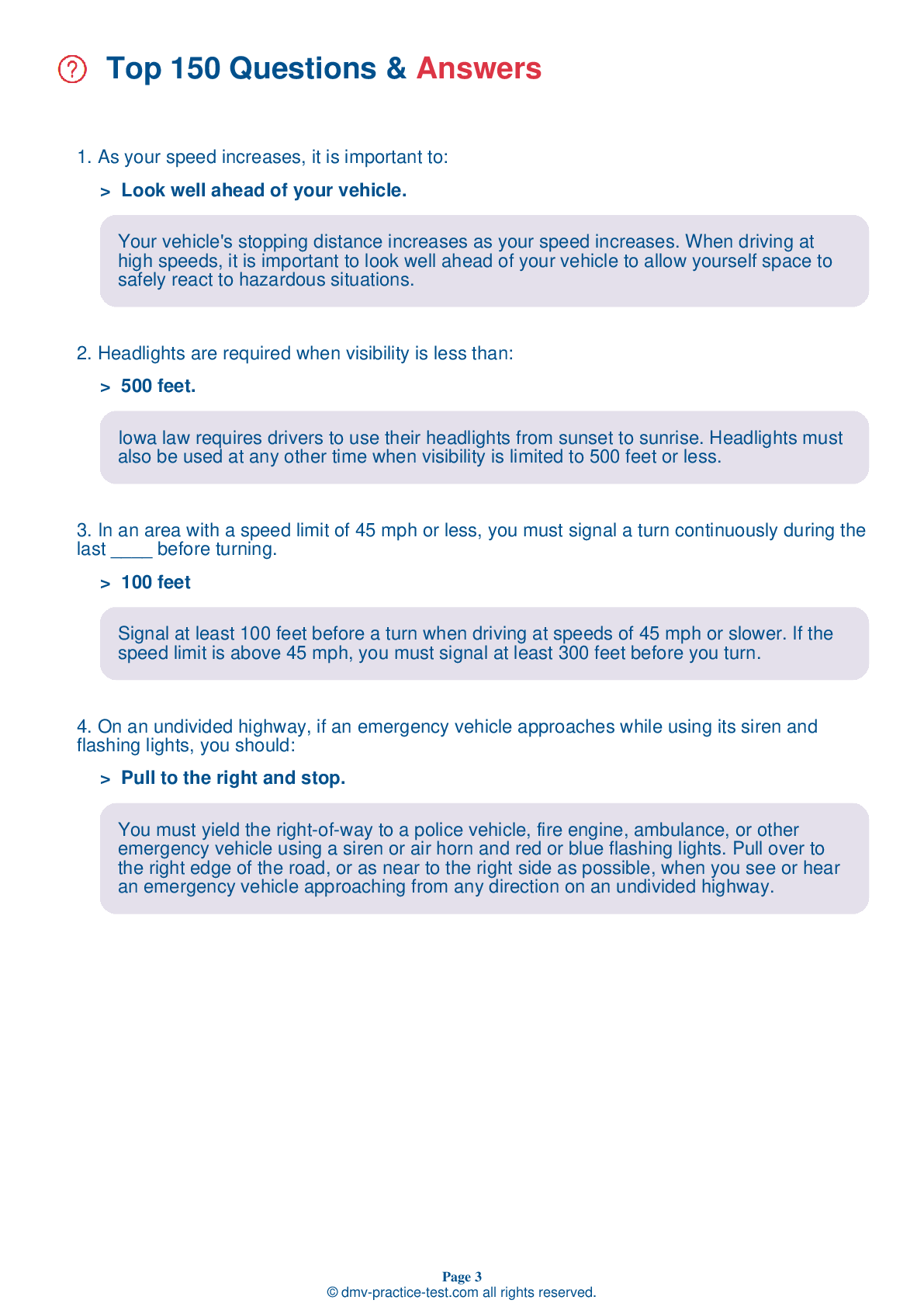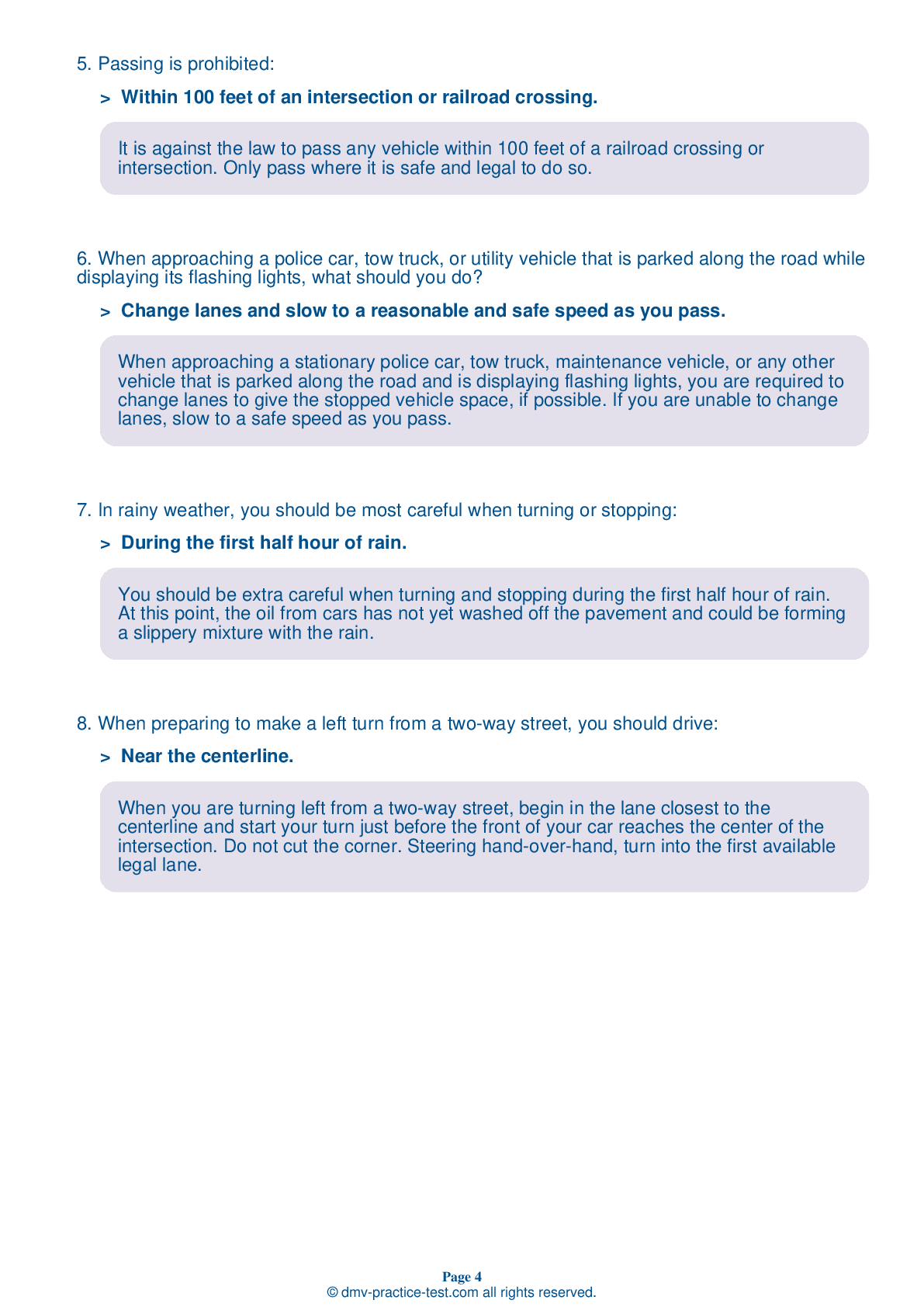FREE Iowa DMV Practice Test #13 Page 2 of 5
The DMV practise tests in Iowa have been updated for January 2025. It comprises questions based on the most important traffic signals and legislation for 2025 from the Iowa Driver Handbook. To study for the DMV driving permit test and driver's licence exam, use actual questions that are very similar (often identical!) to the DMV driving permit test and driver's licence exam.
Each question on the practise exam has a tip and explanation to help you recall the ideas. Questions about traffic rules, traffic signs, and driving statutes, as well as information from the Driver Handbook, will be included in the written portion of the official Iowa DMV test.
You must properly answer 28 of the 35 questions to receive a passing mark. To help you prepare for your Iowa instruction permit or driver's licence, take our DMV practise test.
The DMV exam is offered in a variety of languages.
Using any form of testing help will result in an automatic fail, and the DMV may take further action against your driver's licence, so avoid it.
9 . You are driving on the freeway. The vehicle in front of you is a large truck. You should drive:
When you follow so closely behind a truck that you cannot see the truck driver’s side view mirrors, the trucker cannot see you and has no way of knowing you are there. Tailgating a truck, or any vehicle, is dangerous because you take away your own cushion of safety if the vehicle in front of you stops quickly.
10 . You want to park downhill on a two-way road and there is no curb. Which way do you turn your front wheels?
When parking facing downhill on a road with or without a curb, or when facing uphill on a road without a curb, turn your front wheels toward the edge of the road so your vehicle will roll away from traffic if the brakes fail. However, when parking uphill on a road with a curb, turn your wheels toward the center of the road so the vehicle will roll into the curb if the brakes fail.
11 . On a green arrow, you must:
A green arrow means "go." You must turn in the direction the arrow is pointing after you yield to any vehicles, bicycles, or pedestrians who are still in the intersection.
12 . This sign means:




